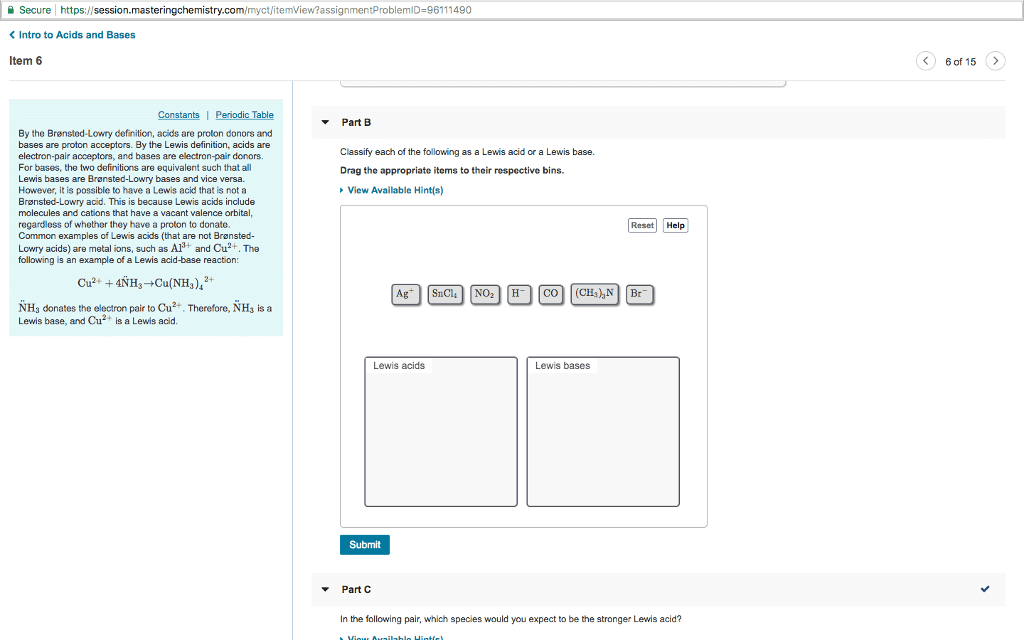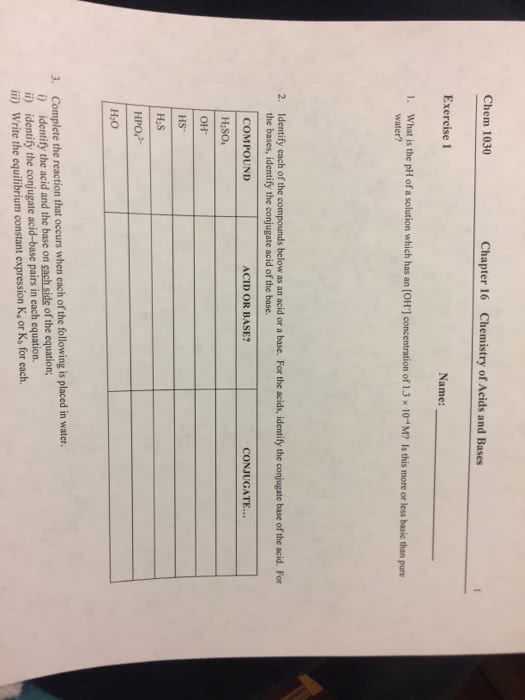CHEM 1007 Lecture Notes - Lecture 1: Equivalence Point, Weak Base, Acid Dissociation Constant
Document Summary
Bronsted lowry theory: acids are proton (h+ ion) donors, bases are proton acceptors. Acids and bases react in pairs, one acid and one base. Any substance with a hydrogen bonded to a more electronegative element can behave as an acid. Any species with a lone pair of electrons can behave as a base. Every acid can lose a proton and become a base and vice versa: this is conjugate acid-base pairs, cl- conjugate base of hcl, hcl conjugate acid of cl- The better an acid is (the easier it donates its proton), the worse its conjugate base is at accepting protons. A species that behaves as an acid & a base is amphoteric. Acid base reactions follow acid 1 + base 2 -> base 1 + acid 2". A neutral solution has equal concentrations of h+/h3o+ and oh: in pure water [h+] = [oh-, [h+]2 = [h+][oh-]= 1. 0 x 10-14, [h+] = 1. 0 x 10-7 moldm-3 = [oh-]





